

Metaverse
‘We love big, hard challenges’: Nvidia’s Richard Kerris on empowering Indian content creators – Crypto News
That’s the line Richard Kerris, vice president of media & entertainment at Nvidia, keeps returning to – and not just as a catchphrase. It’s how the US chipmaking company is approaching the transformation of content creation, live events, gaming, and immersive storytelling through AI and accelerated computing.
On his first visit to India for the inaugural Waves summit, Kerris shared Nvidia’s long-term vision for the Indian media and entertainment ecosystem, a market that he said is on the cusp of going from outsourcing to ownership. For someone driving global strategy for one of the world’s most advanced AI platforms, Kerris remains rooted in creativity.
“It’s one thing to talk about the technology,” he said, “it’s another to actually use it.”
A photographer himself, Kerris sees creativity as core to how Nvidia engages with its partners, users and developers. He said GenAI is now supercharging that creative spirit. India, Kerris said, has traditionally been seen as a service hub for animation and post-production. But that narrative is shifting.
“Studios here already know how to collaborate and deliver on time and on budget. Now they’ll start driving the creative concept too,” he said.
One big reason for this change is Nvidia’s consistent software stack: the same platform runs across consumer-grade GeForce cards and billion-dollar data centres.
“We’ve seen content made on GeForce cards win Academy Awards,” he said, adding that affordability no longer has to limit capability. New compact AI devices like Spark are aimed at smaller creators, offering real-time rendering and scalable output without ballooning costs.
“From the aspirational to the professional, we have a platform that solves for both,” Kerris added.
Immersive experiences
Beyond content creation, Nvidia enables a new kind of media consumption where fans become participants. He referenced Arcturus and Viewport, companies that use AI to stitch together stadium feeds, allowing viewers to pick camera angles, follow players in real time or get instant AI-generated highlights.
“We’re seeing the rise of truly interactive experiences, whether it’s an NBA match or a live concert,” Kerris said. “This is a compute-intensive challenge, and that’s what we do best.”
With India’s live entertainment market expanding and consumer expectations shifting towards immersion, Nvidia’s role in enabling real-time, personalised experiences is only expected to grow.
Real-time rendering, virtual sets
Real-time rendering, once a post-production bottleneck, is another frontier being redefined. Kerris noted that about 20% of productions use game engines like Unreal, a figure projected to hit 70% in five years.
“You can now do multiple shoots in a day and use virtual lighting and LED backdrops. It’s about giving control back to the creator,” he said.
This shift is particularly critical in India, where films are made in various languages and demand highly localised versions. Using AI, Nvidia-backed tools also enable real-time dubbing, not just translating but adjusting lip sync, facial structure, and even dialect.
“The translation has to understand the context,” Kerris said. “Saying something in LA vs Mumbai? The tools need to adapt to that nuance. It’s not just subtitling anymore but a story-preserving transformation.”
Soul of storytelling
With generative AI becoming easier and faster to deploy, concerns around originality and creative integrity are rising.
“There’s a fear of what’s not understood,” Kerris admitted. “But we’ve always had tools. The key is knowing how to use them responsibly.”
Nvidia, he said, is working closely with partners like Adobe to embed watermarking, traceability, and data ownership in the AI development pipeline.
“What you train on is as important as what you output,” he said, stressing that content made with AI should still reflect the creator’s intent. He pushed back against the idea that AI-generated music or visuals will replace human creativity.
“You might hear an AI-generated song once, but would you put it on a playlist? Taste is human. That’s not going away,” he said.
Agentic AI and the next frontier
Looking ahead, Kerris is particularly excited about agentic AI (systems that make decisions and act autonomously), that can mimic mentors or iconic creators.
“Imagine a trained AI agent that gives you feedback like a legendary director would,” he said. “What better way to inspire the next generation than to let them learn directly from icons, even virtually?”
He sees this as particularly powerful in education.
“We all want to be mentored. AI can make that access possible,” Kerris said.
Not just serviced here
As India moves from a back-end contributor to a creative originator, Kerris sees Nvidia playing a vital role.
“We’re not here to just sell chips. We’re here to partner with studios, with startups, with creators,” he said.
The company is already in talks with local partners and cloud providers like Yotta and E2E Networks to offer flexible compute access at scale.
“India has the talent. Now it’s about building creative confidence,” he said. “This is going to be an amazing next few years.”
-

 Blockchain1 week ago
Blockchain1 week agoXRP ETFs Listed On DTCC Ahead Of Possible Launch – Crypto News
-
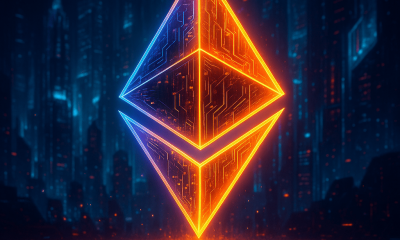
 Blockchain1 week ago
Blockchain1 week agoEthereum (ETH) Holds Strong as Analysts Target $4,400 Despite ETF Outflows – Crypto News
-

 Cryptocurrency6 days ago
Cryptocurrency6 days agoVanEck’s Solana ETF nears launch after SEC 8-A filing – Details – Crypto News
-

 Cryptocurrency6 days ago
Cryptocurrency6 days agoVanEck’s Solana ETF nears launch after SEC 8-A filing – Details – Crypto News
-
Technology1 week ago
Breaking: Coinbase Launches Token Sales Platform for Retail Investors – Crypto News
-
Business1 week ago
Breaking: Coinbase Launches Token Sales Platform for Retail Investors – Crypto News
-

 De-fi7 days ago
De-fi7 days agoZEC Jumps as Winklevoss‑Backed Cypherpunk Reveals $100M Zcash Treasury – Crypto News
-

 Metaverse1 week ago
Metaverse1 week agoWhat’s in India’s first AI rulebook? – Crypto News
-
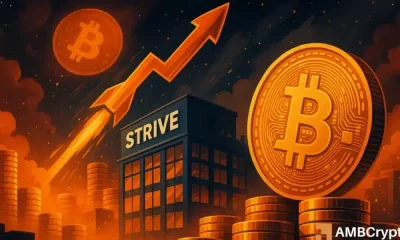
 Cryptocurrency1 week ago
Cryptocurrency1 week agoHow Strive’s $162M Bitcoin bet could make it the next MicroStrategy – Crypto News
-

 Metaverse5 days ago
Metaverse5 days agoClaude Desktop is your new best friend for an organized PC – Crypto News
-

 Cryptocurrency1 week ago
Cryptocurrency1 week agoBitcoin faces quantum risk: why SegWit wallets may offer limited protection – Crypto News
-
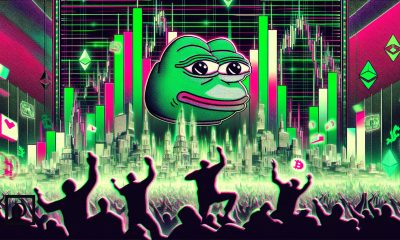
 De-fi6 days ago
De-fi6 days agoKraken’s xStocks Hit $10B in Total Trading Volume – Crypto News
-

 Blockchain1 week ago
Blockchain1 week agoSquare Enables Bitcoin Payments for Sellers – Crypto News
-
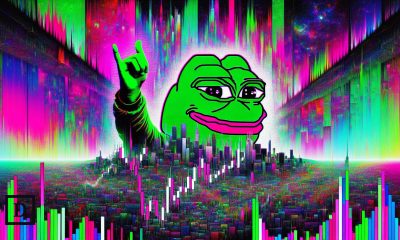
 De-fi1 week ago
De-fi1 week agoBitcoin Hovers Around $105,000 as Government Shutdown Progress Lifts Markets – Crypto News
-
others1 week ago
Breaking: Canary XRP ETF Gets Approval with 8-A Filing to List on Nasdaq – Crypto News
-

 Metaverse1 week ago
Metaverse1 week agoYour deep research tool may save you time, but can it save you embarrassment? – Crypto News
-
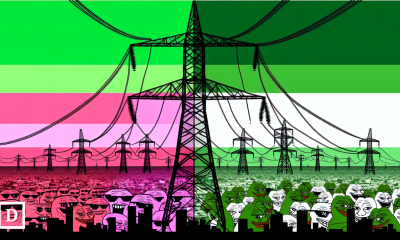
 De-fi1 week ago
De-fi1 week agoXPL Rallies After Plasma Reveals Collaboration with Daylight Energy – Crypto News
-

 De-fi1 week ago
De-fi1 week agoSKY Surges 14% as Savings TVL Passes $4 Billion – Crypto News
-
Business5 days ago
December Fed Meeting 2025: Rate Cut or Hold? Key levels to Watch – Crypto News
-

 Metaverse5 days ago
Metaverse5 days agoClaude Desktop is your new best friend for an organized PC – Crypto News
-
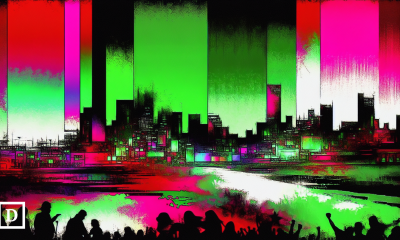
 De-fi1 week ago
De-fi1 week agoMonad Faces Community Backlash After Unveiling Tokenomics – Crypto News
-

 others1 week ago
others1 week agoGold retreats from three-week high but retains bullish outlook – Crypto News
-

 De-fi1 week ago
De-fi1 week agoThreshold Network Upgrades tBTC Bridge to Link Institutional Bitcoin with DeFi – Crypto News
-

 Cryptocurrency1 week ago
Cryptocurrency1 week agoXRP’s Big Moment? Why Nov. 13 Could Be the Day Ripple Investors Have Waited For – Crypto News
-
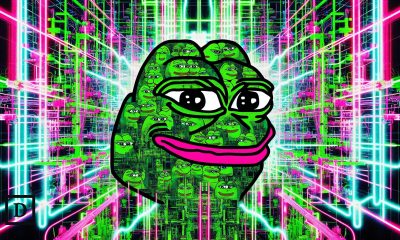
 De-fi1 week ago
De-fi1 week agoTrump Tokens Outperform After US President Teases ‘Tariff Dividends’ – Crypto News
-

 Cryptocurrency1 week ago
Cryptocurrency1 week agoBitcoin (BTC) battles macro headwinds despite improved ETF inflows – Crypto News
-

 Blockchain6 days ago
Blockchain6 days agoWhy the Future of Blockchain Payments Could Stay Narrow – Crypto News
-

 Technology1 week ago
Technology1 week agoEU Eyes Banning Huawei From Mobile Networks of Member Countries – Crypto News
-

 others1 week ago
others1 week agoAustralian Dollar loses ground despite stronger Westpac Consumer Confidence – Crypto News
-
others1 week ago
Bitcoin News: BTC Exchange Reserves Fall as Tether Mints $1B USDT – Crypto News
-

 Blockchain1 week ago
Blockchain1 week agoXRP Price Resumes Uptrend Amid Renewed Market Optimism and Whale Activity – Crypto News
-

 De-fi1 week ago
De-fi1 week agoInstitutional Sentiment is Turning Bearish on Crypto: Sygnum – Crypto News
-
Cryptocurrency1 week ago
Can Dogecoin Price Hold Above $0.17 Amid Weekly Surge? – Crypto News
-

 Technology1 week ago
Technology1 week agoChinas cryptoqueen jailed in UK over $6.6 billion Bitcoin scam – Crypto News
-
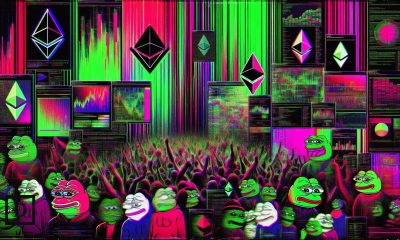
 De-fi1 week ago
De-fi1 week agoEthereum Sees First Sustained Validator Exit Since Proof-of-Stake Shift – Crypto News
-

 Blockchain1 week ago
Blockchain1 week agoBitcoin Path To $1 Million Clears With OG Sellers Fading: Weisberger – Crypto News
-
Technology1 week ago
Breaking: USDC Issuer Circle Explores Native Token for Arc Network – Crypto News
-

 Metaverse1 week ago
Metaverse1 week agoFoxconn reports strong Q3 profit driven by AI server boom, teases OpenAI announcement – Crypto News
-
others1 week ago
Hyperliquid Halts Deposits and Withdrawals Amid POPCAT Liquidation Saga – Crypto News
-
Business1 week ago
Hyperliquid Halts Deposits and Withdrawals Amid POPCAT Liquidation Saga – Crypto News
-

 De-fi1 week ago
De-fi1 week agoFlare TVL Nears Record High as Firelight Teases XRP Liquid Staking – Crypto News
-

 Cryptocurrency7 days ago
Cryptocurrency7 days agoAI-driven phishing scams and hidden crypto exploits shake Web3 security – Crypto News
-

 De-fi6 days ago
De-fi6 days agoXRP Surges as First US Spot ETF Debuts on Nasdaq – Crypto News
-

 Cryptocurrency6 days ago
Cryptocurrency6 days agoUAE makes Bitcoin wallets a crime risk in global tech crackdown – Crypto News
-
others5 days ago
December Fed Meeting 2025: Rate Cut or Hold? Key levels to Watch – Crypto News
-
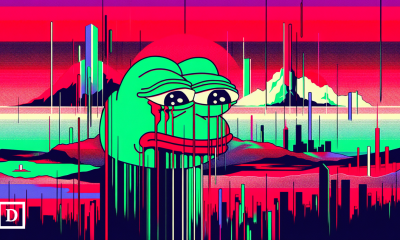
 De-fi5 days ago
De-fi5 days agoBitcoin Drops to $94,000 Following Second-Largest Daily ETF Outflows – Crypto News
-

 De-fi5 days ago
De-fi5 days agoBitcoin Drops to $94,000 Following Second-Largest Daily ETF Outflows – Crypto News
-

 Technology4 days ago
Technology4 days agoPerplexity faces harsh crowd verdict at major San Francisco AI conference: ‘Most likely to flop’ – Crypto News
-
Business1 week ago
Arthur Hayes Buys UNI as CryptoQuant CEO Says Supply Shock ‘Inevitable’ for Uniswap – Crypto News
-
Business1 week ago
U.S. Government Shutdown Set to End as House Panel Approves Senate Funding Deal – Crypto News












